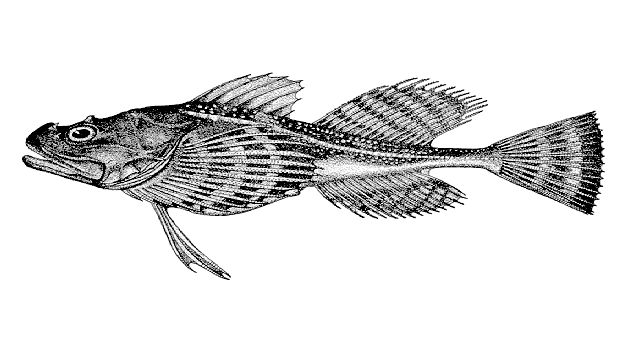| Cottidae (Sculpins) |
| 60 cm TL (male/unsexed); max.weight: 260.0 g; max. reported age: 14 years |
|
demersal; freshwater; brackish; marine; depth range 0 - 100 m |
| Atlantic and Arctic: Baltic coast of Sweden, Finland, Russia and southwestern to eastern Poland; western coast of Sweden to northern coast of Norway, eastward to White and Barents Sea basins. In Siberia eastward to about Anadyr estuary. Landlocked populations in Sweden, central Finland and Karelia (Ref. 59043). Arctic drainages of North America (Ref. 5723). |
|
Dorsal spines (total): 7-9; Dorsal soft rays (total): 13-16; Anal spines: 0-0; Anal soft rays: 13-17; Vertebrae: 37-42. Identified by the four bony protuberances on the top of the head (the protuberances are smaller in females and young and absent in the freshwater form), the chainlike lateral line, the sharp spines on the preoperculum, and the absence of palatine teeth (Ref. 27547). Gill rakers reduced to rounded, spiny protuberances (Ref. 27547). Soft dorsal often much enlarged in adult males; caudal truncate to slightly rounded (Ref. 27547). Young gray above, with three or four dark saddles below dorsal fins and a dark spot on dorsal side of caudal peduncle; adults are darker; spiny dorsal fin dusted with black; soft dorsal, anal, pectoral and caudal fins have dark bars; pelvic fins pale (Ref. 27547). |
| Occurs in cold brackish and moderately saline water near the coast (Ref. 27547). Enters coastal rivers and may occur as far as 120 miles inland (Ref. 5723). Landlocked in lakes (Ref. 59043). Maximum depth reported at 100m (Ref. 35388). Benthic (Ref. 58426). Movements are limited to short onshore-offshore seasonal movements and mass movements of fry into shallow water in autumn (Ref. 28908, 28910). Moreover, there are no migrations of large numbers; movement into freshwater and long distances up rivers are apparently undertaken by relatively few individuals at a time (Ref. 27547). Diurnal from November to April but is largely nocturnal the rest of the year (Ref. 28905). Feeds on small crustaceans, fishes (Ref. 4968) and molluscs (Ref. 58426). Spawning takes place in shallow waters, male digs a groove in the gravel where pairing and egg laying occur. Move to deeper water in the spring, where they stay in summer (Ref. 35388). Landlocked populations are locally threatened (Ref. 59043). |
|
Least Concern (LC); Date assessed: 01 March 2012 Ref. (130435)
|
| harmless |
Source and more info: www.fishbase.org. For personal, classroom, and other internal use only. Not for publication.

